Fiber Optic Center will be at Photonics West - and BICSI Winter.
Schedule your meeting with a member of the FOC team now
Fiber Optic Splicing
 AFL CT58 Fiber Cleaver
AFL CT58 Fiber CleaverThe AFL CT58 Fiber Cleaver is engineered for precision cleaving of silica fibers with 80 µm cladding...
Part: S017097 OFS FITEL S327A High Precision Fiber Optic Cleaver
OFS FITEL S327A High Precision Fiber Optic CleaverThe OFS Fitel S327 Optical Fiber Cleaver is an ergonomically designed, one-action cleaver built for ...
Part: S327A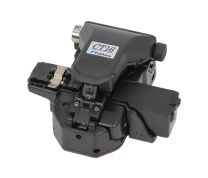 AFL CT16 Dual Fiber Cleaver (125um)
AFL CT16 Dual Fiber Cleaver (125um)The CT16 fiber cleaver from Fujikura was designed for FTTH or other space constrained applications w...
Part: S018330 AFL FSM-45S Fusion Splicer (battery)
AFL FSM-45S Fusion Splicer (battery)The 45S cladding alignment fusion splicer is changing the way people splice fiber in small to mid-fi...
Part: S018319 AFL FSM-45S Fusion Splicer (CT-50 & battery)
AFL FSM-45S Fusion Splicer (CT-50 & battery)The 45S cladding alignment fusion splicer is changing the way people splice fiber in small to mid-fi...
Part: S018318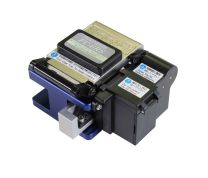 Sumitomo FC-6RS Precision Single Fiber Cleaver w/ Scrap Catcher
Sumitomo FC-6RS Precision Single Fiber Cleaver w/ Scrap CatcherAvailable models FC-6S+ - auto-return blade carriage - simple offcut bin to collect falling fib...
Part: FC-6S+ Sumitomo FC-6R+ Precision Ribbon & Single Fiber Cleaver w/ Auto-Rotating Blade & Scrap Catcher
Sumitomo FC-6R+ Precision Ribbon & Single Fiber Cleaver w/ Auto-Rotating Blade & Scrap CatcherAvailable models FC-6S+ - auto-return blade carriage - simple offcut bin to collect falling fib...
Part: FC-6R+ NorthLab ProCoater Fiber Recoater
NorthLab ProCoater Fiber RecoaterThe ProCoater by NorthLab is an ultra-compact fiber recoater designed to cover a wide range of fiber...
Part: RCT-09-0007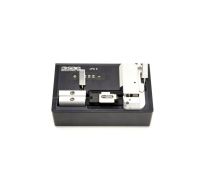 NorthLab ProCleave LD II Large Diameter Fiber Cleaver
NorthLab ProCleave LD II Large Diameter Fiber CleaverCost effective, high precision cleaver designed for fibers with cladding diameters of 125-550um
Part: CLV-09-0004 Photon Kinetics FK12 Ultrasonic Angle Cleaver
Photon Kinetics FK12 Ultrasonic Angle CleaverThe FK11 & FK12 Fiber Optic Cleavers both employ an ultrasonic cleaving technology to produce flat, ...
Part: FK12 Photon Kinetics FK11 Ultrasonic Cleaver
Photon Kinetics FK11 Ultrasonic CleaverThe FK11 & FK12 Fiber Optic Cleavers both employ an ultrasonic cleaving technology to produce flat, ...
Part: FK11 Sumitomo FC-8R Precision Fiber Cleaver
Sumitomo FC-8R Precision Fiber Cleaver* Smart Cleave Counter * 1 to 12-Fiber Ribbon Cleaver * Automatic Blade Rotation * Ideal Cleaver ...
Part: FC-8R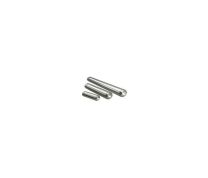 AFL FP-60 Fusion Protection Sleeve, 60mm, 900um
AFL FP-60 Fusion Protection Sleeve, 60mm, 900umAFL Global FP-60 Heat Shrink Fusion Protection Sleeve, 60mm, for up to 900um buffered fiber, Clear, ...
Part: S015915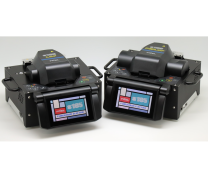 Fitel S185PMLDF Large Diameter PM Fusion Splicer
Fitel S185PMLDF Large Diameter PM Fusion SplicerThe FITEL S185LDF / S185PMLDF Highend Fusion Splicers are designed for splicing up to 500μm cladding...
Part: SPL-06-0201 Fitel S185LDF Large Diameter Fusion Splicer
Fitel S185LDF Large Diameter Fusion SplicerThe FITEL S185LDF / S185PMLDF Highend Fusion Splicers are designed for splicing up to 500μm cladding...
Part: SPL-06-0203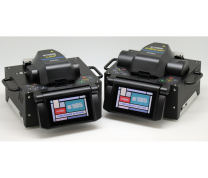 Fitel S185PM High Strength PM Fusion Splicer
Fitel S185PM High Strength PM Fusion SplicerThe FITEL S185HS / S185PM High-end Fusion Splicers are designed for high strength fusion splicing of...
Part: SPL-06-0200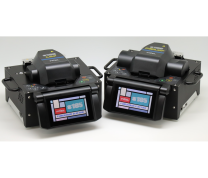 Fitel S185HS High Strength Fusion Splicer
Fitel S185HS High Strength Fusion SplicerThe FITEL S185HS / S185PM High-end Fusion Splicers are designed for high strength fusion splicing of...
Part: SPL-06-0202 AFL FSM-90R 16 Fiber Fusion Splicer (CT-50, battery & stripper)
AFL FSM-90R 16 Fiber Fusion Splicer (CT-50, battery & stripper)The Fujikura 90R is the mass fusion splicer workhorse of the splicing world. As data demand continue...
Part: S017510 AFL FSM-90R 16 Fiber Fusion Splicer w/ Bluetooth (CT-50, battery & stripper)
AFL FSM-90R 16 Fiber Fusion Splicer w/ Bluetooth (CT-50, battery & stripper)The Fujikura 90R is the mass fusion splicer workhorse of the splicing world. As data demand continue...
Part: S017511 AFL FSM-90R 16 Fiber Fusion Splicer (battery)
AFL FSM-90R 16 Fiber Fusion Splicer (battery)The Fujikura 90R is the mass fusion splicer workhorse of the splicing world. As data demand continue...
Part: S017540 AFL FSM-90R 16 Fiber Fusion Splicer w/ Bluetooth (battery)
AFL FSM-90R 16 Fiber Fusion Splicer w/ Bluetooth (battery)The Fujikura 90R is the mass fusion splicer workhorse of the splicing world. As data demand continue...
Part: S017509 AFL FSM-90S+ Fusion Splicer Kit (CT-50 & battery)
AFL FSM-90S+ Fusion Splicer Kit (CT-50 & battery)The Fujikura 90S+ core alignment fusion splicer solves common problems seen in the field from splici...
Part: S017521 AFL FSM-90S+ Fusion Splicer (battery).
AFL FSM-90S+ Fusion Splicer (battery).The Fujikura 90S+ core alignment fusion splicer solves common problems seen in the field—from splici...
Part: S017519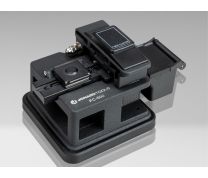 Jonard Precision Fiber Cleaver
Jonard Precision Fiber CleaverThe Jonard Tools FC-500 precision fiber cleaver is designed to provide a precise cleave and prepare ...
Part: FC-500

